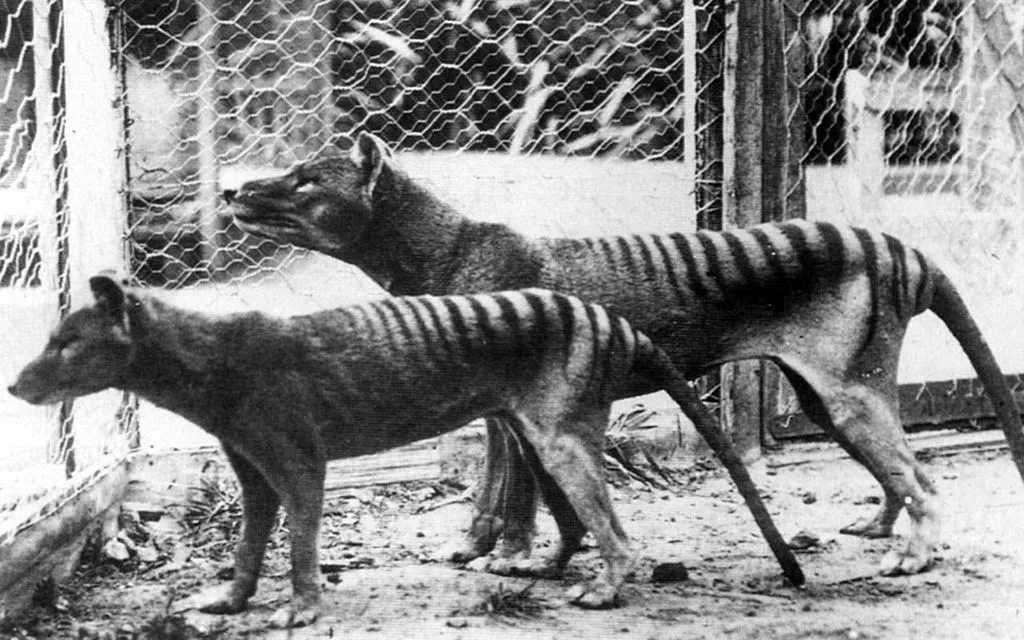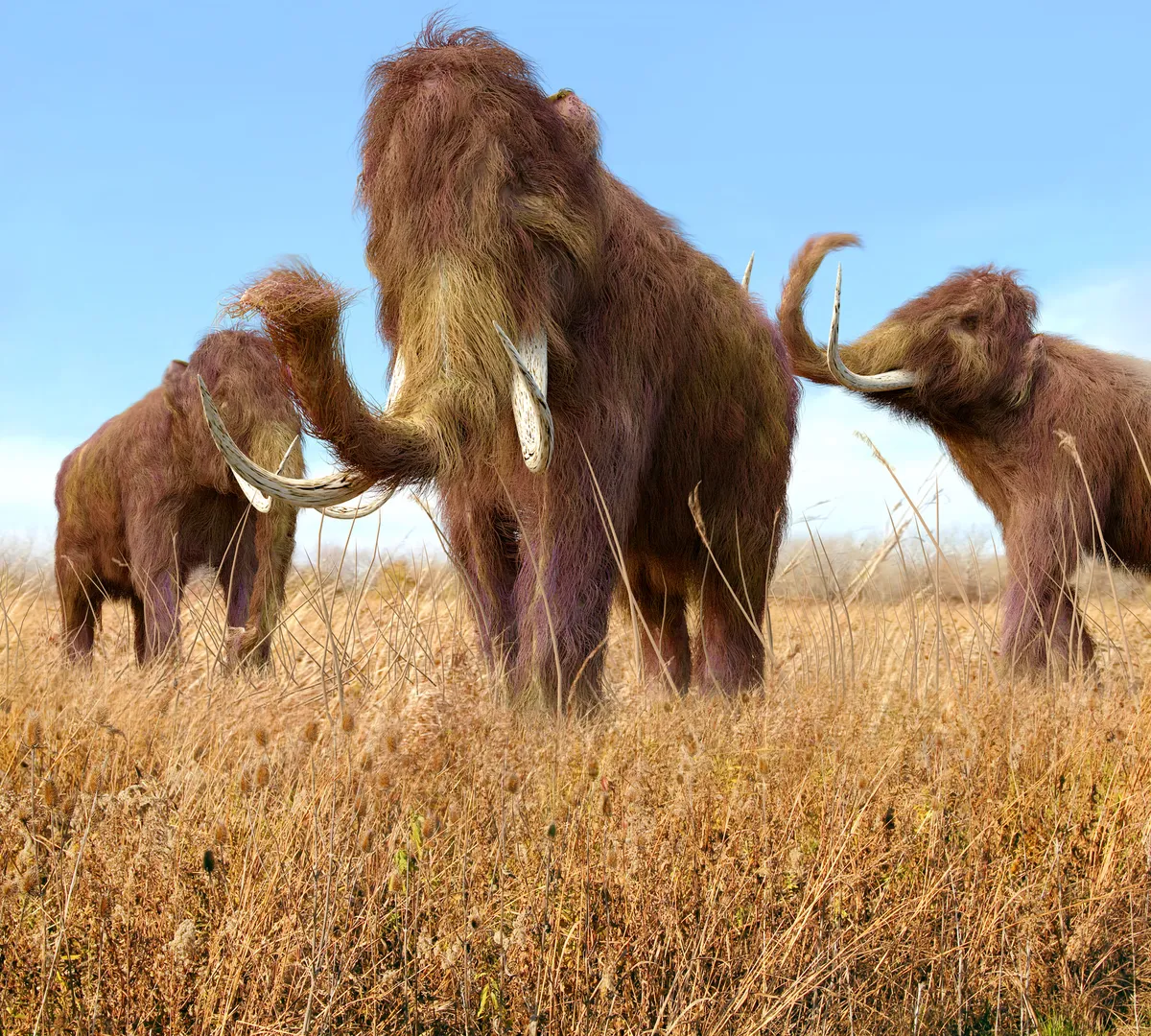Even if they don’t understand the science, most people know in their hearts that we won’t be bringing T rex or Diplodocus back to life like Frankenstein’s monster any time soon – if ever, says James Fair.
But ‘de-extinction’, as it is called, is big business these days, and rarely a month goes by without a biotech company or group of scientists claiming they’re going to revive a long-dead species.
- Mark Carwardine: de-extinction is not the solution to the extinction crisis
- Back from the dead: meet some animals once presumed extinct
Just how realistic these claims are and whether we should be attempting to play God in this way – that’s another story.
Back from the dead: 10 extinct species to look out for
Tasmanian tiger

The probably extinct (but let’s not go down that particular wombat hole) Tasmanian tiger, or thylacine, is near the top of the list of species that scientists would love to raise from the dead.
That’s because not only have they almost completely sequenced the thylacine’s genome from well-preserved genetic material, but also because they have a living animal – the closely related fat-tailed dunnart – whose genome they could edit and then use as a potential surrogate mother. It’s also a fascinating animal – a marsupial that evolved to look remarkably like a wolf even though they are separated by more than 100 million of years of evolution.
Woolly mammoth

Like today’s elephants that we know and love, and to which they are closely related, woolly mammoths lived in large herds before their final demise some 4,000 years ago. It makes the jumbo task of restoring the species to its Arctic tundra home even bigger – arguably, you can’t just recreate one or two, you’d need enough for a whole family.
- Should the mammoth live again? Why bringing back the extinct mammoth COULD keep the Arctic frozen
- Woolly mammoth vs elephant: What's the difference between these two giants?
Scientists won’t literally be creating mammoth clones from DNA samples – instead, they will insert the genes for their most diagnostic traits such as their shaggy coats, enormous curved tusks and distinctive domed heads into genome of an Asian elephant, which would then gestate the embryo. The offspring would be a hybrid of the two species – a ‘mammophant’. Bioscience company, Colossal, has said it will produce an embryo by 2028.
Dodo

The dodo became one of the most potent symbols of humans’ devastating impact on wildlife following its disappearance from Mauritius in the mid-17th century. Colossal, the same tech company involved in efforts to bring back the Tasmanian tiger and mammoth, has said it wants to use gene-editing to recreate the dodo, but experts say this is a much more complicated process with birds than it is with mammals (which is already complicated enough).
- Scientists are a step closer to bringing the dodo back from extinction. And it may save existing wildlife on Mauritius
- As scientists plot to bring back the dodo, Helen Pilcher asks whether we should - and what would happen if we did
The proposed process would involve gene-editing the genome of its closest-living relative, the Nicobar pigeon. Conservationists question whether non-native species still living on Mauritius would stymie attempts to reintroduce bio-engineered dodos to the wild.
Passenger pigeon

It was said that passenger pigeon flocks in North America were so huge they obscured the sun and darkened the sky, so when the last one – Martha – died in a zoo in the 1930s after decades of senseless mass slaughter, the impact on the environment was enormous.
- Back from the dead: Scientists plot to resurrect the passenger pigeon - but should we really bring it back just because we can?
- Dove vs pigeon - what’s the difference between these two cooing birds?
Because they existed in such huge numbers, passenger pigeons created canopy disturbances that increased biodiversity – as a result of roosting in great concentrations, they would snap branches and even bend small trees to the ground. More complex forest habitats resulted, creating niches for other wildlife. Scientists from Revive & Restore have proposed editing the genome of the band-tailed pigeon to produce a new generation of Marthas.
Australian gastric-brooding frog
Sounding like something out of science fiction horror film, the Australian gastric-brooding frog had a remarkable reproductive strategy.
Males swallowed the fertilised eggs, brooded the young in their stomachs and then ‘gave birth’ by projectile-vomiting them through their mouths. When the species was discovered in the 1970s, it was already highly restricted, and it went extinct in the 1980s.
In 2013, scientists from the University of New South Wales said they had successfully cloned embryos of the species (from the cells of one of the last living specimens), but these had failed to develop any further.
Pyrenean ibex

The Pyrenean ibex – a subspecies of the Iberian ibex or wild goat – holds the dubious distinction of having gone extinct, brought back from the dead, and then gone extinct again. It officially died out in 2000 after the last remaining individual, Celia, was killed by a falling tree.
But because they knew how rare the Pyrenean ibex was, scientists had collected skin biopsies from her, and in 2003, produced a clone – the Pyrenean ibex was reborn. Sadly, Celia’s clone only survived a few minutes because of a defect in one of its lungs, and no other cloning attempts have been attempted.
Aurochs

The wild ancestor of all domesticated cattle, the aurochs (the noun can be singular or plural) became extinct in the 1600s, the victim of habitat loss and unsustainable hunting.
But of course cows live on, and so scientists have been able to recreate the aurochs through a process known as ‘back breeding’ – essentially, breeding from cattle with the right characteristics to produce something that looks like an aurochs, even if it isn’t actually one.
Known as ‘tauros’, they are used in rewilding projects across Europe where their behaviour can enhance ecosystem complexity for the benefit of plants and invertebrates.
Quagga

The quagga was a subspecies of plains zebra with unusual markings – brown and white stripes on the front half of its body, and plain brown on the back. It was native to the Karoo region of South Africa and eliminated by hunters who viewed it as competition for their livestock.
But scientists in South Africa have determined that the genes responsible for its unique appearance are still present in its extant zebras, and have begun a project to selectively breed them to reproduce an animal that resembles the quagga. Critics of the project describe it as a stunt, saying the recreated quaggas don’t necessarily have the ecological adaptations or behavioural differences of the real thing.
